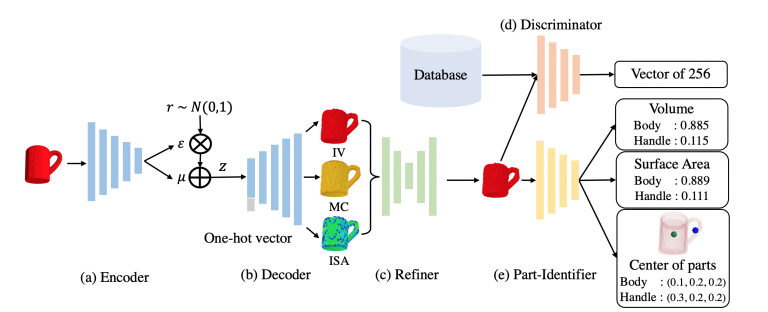Abstract: We propose a conditional generative model, named Part Geometry Network (PG-Net), which synthesizes realistic objects and can be used as a robust feature descriptor for object reconstruction and classification. Surface and volumetric representations of objects have complementary properties of three-dimensional objects. Combining these modalities is more informative than using one modality alone. Therefore, PG-Net utilizes complementary properties of surface and volumetric representations by estimating curvature, surface area, and occupancy in voxel grids of objects with a single decoder as a multi-task learning. Objects are combinations of multiple parts, and therefore part geometry (PG) is essential to synthesize each part of the objects. PG-Net employs a part identifier to learn the part geometry. Additionally, we augmented a dataset by interpolating individual functional parts such as wings of an airplane, which helps learning part geometry and finding local/global minima of PG-Net. To demonstrate the capability of learning object representations of PG-Net, we performed object reconstruction and classification tasks on two standard large-scale datasets. PG-Net outperformed the state-of-the-art methods in object synthesis, classification, and reconstruction in a large margin.
Object Synthesis by Learning Part Geometry with Surface and Volumetric Representations
Authors: Sangpil Kim, Hyung-gun Chi, Karthik Ramani
Computer-Aided Design Volume 130, January 2021
https://doi.org/10.1016/j.cad.2020.102932


Sangpil Kim
Sangpil Kim is a Ph.D. student in the School of Computer Engineering at Purdue University. He is working on the deep learning algorithm and virtual reality. To be more specific, he develops the generative model, video segmentation, and hand pose estimation with a depth sensor. Currently, he is working on combining virtual reality and deep learning algorithm.
